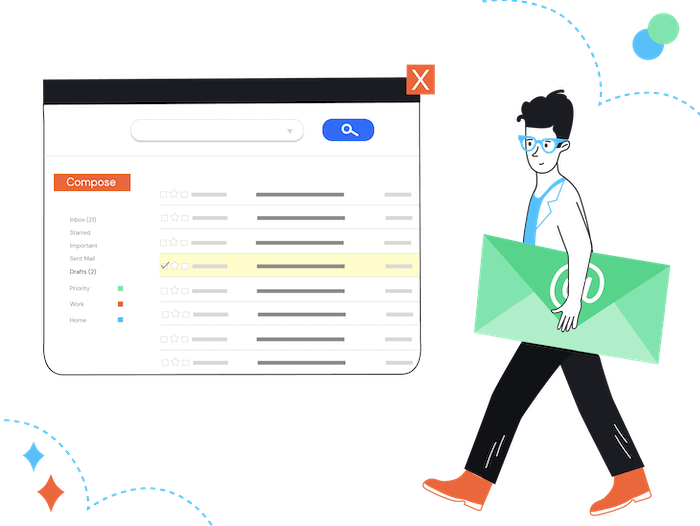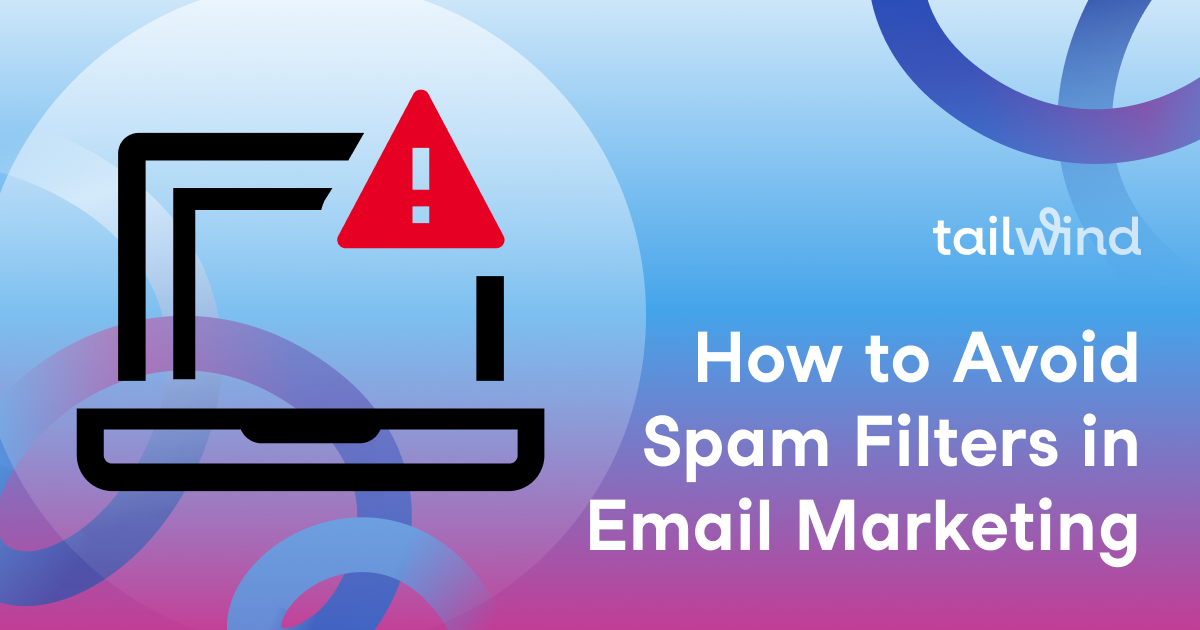Summary
For effective email click tracking that bypasses spam filters, the consensus points strongly towards using branded subdomains aligned with the sender's primary domain. Avoid generic, newly purchased, or throwaway domains for click tracking, as these can significantly harm sender reputation. Proper authentication (SPF, DKIM, DMARC) for these subdomains is also critical to ensure deliverability. Isolating different email types (e.g., transactional vs. marketing) on separate subdomains further protects your primary domain's reputation from potential issues.
Key findings
- Subdomain alignment: Using a subdomain (e.g., click.yourdomain.com) for click tracking that is a subdomain of your main sending domain is consistently recommended as a best practice to maintain sender trust.
- Avoid generic domains: Purchasing new, unaligned, or throwaway domains for click tracking is a major red flag for spam filters and can lead to poor inbox placement.
- Domain reputation: A subdomain's reputation for click tracking directly impacts your email deliverability. Poor practices can result in emails going to the spam folder, even if the sending domain is clean.
- Dedicated subdomains: Separating different email streams (e.g., marketing, transactional, click tracking) onto distinct subdomains helps isolate reputation issues. If one subdomain faces deliverability problems, it won't necessarily affect your entire domain's sending ability.
- Authentication is key: Properly configuring SPF, DKIM, and DMARC records for your click tracking subdomains is essential for verification and trust.
Key considerations
- Warm-up period: New domains and subdomains require a warm-up period of several months (typically 3-6) to build a positive sending reputation before being used for high-volume email.
- Subdomain naming: Choose a subdomain name that is descriptive and aligns with your root domain (e.g., track.yourcompany.com) to foster brand recognition and trust.
- Provider-specific setup: Many email service providers (ESPs) offer dedicated instructions for setting up custom click tracking domains. Follow these closely to ensure proper configuration and authentication.
- Reputation monitoring: Regularly monitor the reputation of your sending and click tracking domains using tools like Google Postmaster Tools and blocklist checkers. This helps you identify and address issues promptly.
What email marketers say
Email marketers often face challenges with deliverability, particularly when using new or unaligned domains for click tracking. The sentiment among marketers is to prioritize brand alignment and dedicated subdomains for different email purposes. Many find that generic or non-branded click tracking links can negatively impact inbox placement, even if the email content and sending domain are otherwise clean. There's a strong leaning towards configuring custom subdomains provided by ESPs or using customer-owned subdomains to build and maintain trust with inbox providers.
Key opinions
- Generic links are risky: Many marketers report issues with emails going to spam when using generic or newly acquired domains for click tracking, suggesting that these are often flagged as suspicious.
- Brand consistency matters: Aligning the click tracking domain with the primary brand domain is seen as crucial for maintaining user trust and avoiding spam filters. This includes using branded shortlinks instead of generic ones like Bitly.
- Subdomain for reputation: Using a subdomain of the client's own email domain for click tracking is a common approach to ensure that any reputation issues are isolated to that specific client and do not affect a shared domain pool.
- Isolation of email types: Marketers frequently emphasize the benefit of using separate subdomains for transactional versus marketing emails, including click tracking for each, to protect critical email streams.
Key considerations
- Custom domain setup: It is generally easy to set up custom click tracking domains through major ESPs, with clear instructions available in their DNS setup documentation.
- Warm-up for new domains: New domains or subdomains for tracking need to be warmed up like any other sending domain to build a positive reputation, which can take several months.
- Avoiding shared reputation pitfalls: While ESP-provided shared click tracking domains can be convenient, they also carry the risk of reputation damage from other users. Marketers should weigh this risk against the benefits of dedicated tracking.
- Technical configuration: Ensure that the DNS records for click tracking subdomains are correctly configured, including CNAME records, to ensure the links resolve properly and tracking works as intended.
- SSL for tracking links: Implementing SSL on tracking domains is a crucial best practice to enhance security and build trust with email providers and recipients.
Marketer view
An email marketer from Email Geeks shared concerns about a new account experiencing zero opens and emails going to spam, despite few spam reports. They suspected their link redirects for click tracking, which use unique domains purchased from Namecheap, might be the issue because these are different from the sending domain. This suggests that the relationship between the sending domain and the click tracking domain is critical for deliverability.
Marketer view
A marketer from Klaviyo advises using a subdomain for click tracking that aligns with your root domain. This consistency helps build trust and avoid spam filters. They also suggest carefully choosing the subdomain name and avoiding certain types that might be flagged as suspicious, emphasizing that a strong brand presence across all email components is key.
What the experts say
Experts strongly advise against using generic or throwaway domains for email click tracking, as this mirrors the behavior of bad actors and can severely damage sender reputation, leading to emails being flagged as spam. The preferred approach is to use a subdomain of the client's own email domain (e.g., click.client.com). This strategy helps isolate any potential deliverability issues to individual clients, protecting the overall sender reputation of an email platform. Building a solid reputation for new domains and subdomains takes time and consistent good sending practices.
Key opinions
- Throwaway domains are a red flag: Experts unequivocally state that using newly purchased, generic, or throwaway domains for click tracking is a major indicator of spammy behavior to inbox providers.
- Subdomain for reputation control: It's highly recommended to use a subdomain of the client's main domain for click tracking. This allows for isolated reputation management, meaning one client's poor sending behavior won't negatively affect others on a shared tracking domain.
- Shared vs. owned reputation: While using an ESP's shared tracking domain can be acceptable if the ESP maintains good policing, owning your tracking domain or using a client's subdomain provides more control and less risk from other senders' bad practices.
- Domain aging: New domains and subdomains need a significant aging period, typically 3-6 months, to build a credible reputation before being fully utilized for email activities.
- Authentication standards: Ensuring SPF and DKIM are correctly set up for all sending and tracking subdomains is foundational for deliverability.
Key considerations
- Scan for prior issues: Before using any domain, especially one newly acquired, it's crucial to scan it for any history of malware or prior blacklistings that could immediately impact its reputation.
- Branded vs. generic links: Always opt for branded links (i.e., subdomains of your client's main domain) over generic ones (like default Bitly links) for click tracking. This enhances brand recognition and trust.
- ESP configuration: ESPs generally provide clear, easy-to-follow instructions for setting up custom click tracking domains. Leverage these guides for proper implementation.
- Content reputation: Even with proper domain setup, poor email content can still lead to deliverability issues. The domain's reputation combined with content quality determines inbox placement.
Expert view
An expert from Email Geeks suggests checking if the domain was previously used to host malware and scanning it for any prior blocklistings. This is a critical first step for any newly acquired domain or subdomain, as a tainted history can immediately undermine deliverability efforts, regardless of current sending practices.
Expert view
An expert from SpamResource highlights that the reputation of a sending IP address or domain is built over time through consistent, legitimate sending behavior. Any shortcuts, such as using new, unaged domains for click tracking, can be seen as suspicious and trigger spam filters, emphasizing the importance of patience and proper warm-up.
What the documentation says
Technical documentation consistently highlights the importance of domain and subdomain configuration for email deliverability, particularly for click tracking. It underscores that proper DNS records, including SPF and DKIM, are paramount for authenticating these subdomains. Documentation often details how aligning the click tracking domain with the sending domain helps email providers verify legitimacy, thereby improving inbox placement and preventing emails from being flagged as spam. The emphasis is on creating a clear, verifiable chain of trust from the sender to the tracked link.
Key findings
- Subdomain configuration: Documentation outlines that setting up dedicated subdomains for different email functionalities, including click tracking, is standard practice to enhance deliverability and manage reputation.
- DNS records: Official guides stress the necessity of configuring correct DNS records (CNAME for tracking, TXT for SPF, DKIM) for these subdomains to ensure proper link resolution and email authentication.
- Authentication alignment: Documentation often emphasizes that the domain used for click tracking should align with the 'From' domain in the email headers to pass DMARC alignment checks, which is critical for avoiding spam filters.
- SSL/TLS encryption: Securing click tracking links with SSL/TLS certificates is consistently recommended by documentation to provide a secure browsing experience and build trust with email providers.
Key considerations
- CNAME records: For custom click tracking domains, setting up a CNAME record that points to the ESP's tracking server is typically the primary technical requirement.
- Impact on reputation: Poorly configured or suspicious click tracking domains can negatively impact the sender's overall domain reputation, leading to email blocklisting (or blacklisting) and lower deliverability.
- Monitoring and reporting: Documentation often advises monitoring deliverability metrics associated with click tracking domains (e.g., click rates, spam complaints) to proactively identify and address issues.
- Provider-specific instructions: While general principles apply, specific steps for setting up click tracking subdomains and their corresponding DNS records vary by email service provider, necessitating adherence to their individual documentation.
Technical article
Documentation from Klaviyo details how to implement SSL for click tracking links. It emphasizes that secure links enhance recipient trust and are a key best practice for email deliverability. This reinforces the need for not just functional tracking but also secure tracking.
Technical article
Documentation from FluentSMTP highlights the importance of setting up SPF and DKIM records for email subdomains to improve security and delivery. This emphasizes that authentication is not just for the main sending domain but also for any subdomains used, including those for click tracking, to build trust with receiving servers.
Related resources
12 resources
Related pages
Does tracking URL subdomain alignment affect email deliverability?
Why use subdomains for email marketing deliverability?
What are the best practices for email link cloaking and click tracking?
What are the best practices for DNS lookups, SPF records, and subdomain usage for email deliverability?
What is the best practice for selecting a subdomain for marketing emails and how does it impact deliverability?
What are the best practices for email deliverability and avoiding spam filters?
How do I ensure email deliverability with different return-path addresses and subdomains?
How email blocklists (or blacklists) actually work: a simple guide
Why Your Emails Are Going to Spam in 2024 and How to Fix It
Boost Email Deliverability Rates: Technical Solutions from Top Performing Senders










